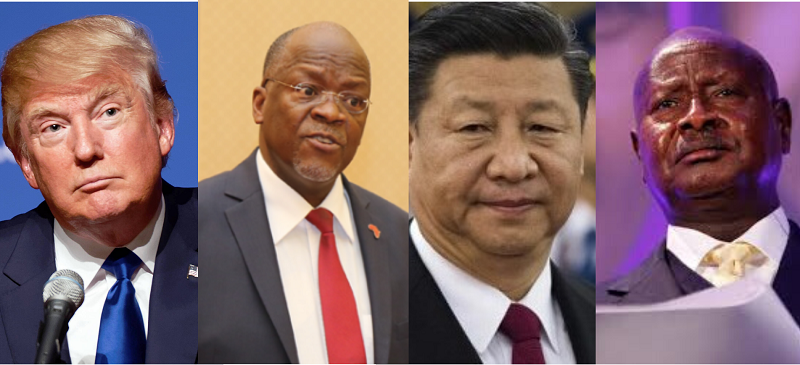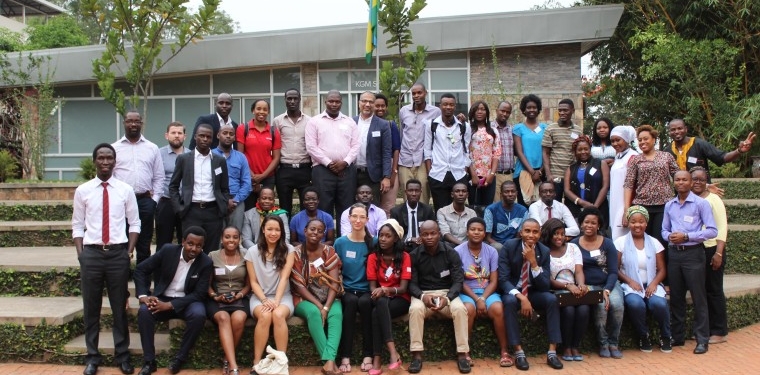Leadership during COVID-19
April 28
Responses by leaders across the world to the coronavirus pandemic have ranged from efficient to questionable. As Canadian writer Robin Sharma eloquently put it: “Anyone can lead when the plan is working. The best lead when the plan falls apart.” Munguongeyo Ivan, a 27-year-old Commonwealth Correspondent from Kampala, Uganda, looks at various interventions to a crisis that is unlike any other experienced in the last century.
The coronavirus, otherwise known as COVID-19, was first reported in Wuhan, China on 31st December 2019. When it began to spread rapidly, the World Health Organisation (WHO) declared it a public health emergency of international concern on January 30, 2020. As of April 26, 2020, there were over 2.9 million confirmed cases of COVID-19 globally and more than 198,000 deaths.
The coronavirus has caused havoc to health systems and triggered several non-health challenges in the political and economic sphere. During this time, we have noticed how leaders have responded differently to the crisis, producing varied results.
China
In China, where the first cases of the virus appeared, news of the outbreak was allegedly initially suppressed. But as the virus started to spread in Wuhan city, the government moved in quickly and imposed a strict nearly three-month lockdown, effectively quarantining millions of people in their homes as a preventive measure.
These seemingly draconian measures seemed to have helped China to stabilize and reduce the infection rate fairly quickly. On April 26, health officials in Wuhan told Reuters journalists that they had no remaining coronavirus cases in their hospitals.
Sweden
In Sweden, the case has been different. Sweden refused to emulate its European counterparts and left large parts of society open. This is after some of the country’s leading health experts used simulations which showed a more limited impact of the virus than projections made by other scientists. They also felt that those who got the virus would have mild symptoms and it would also give Swedes immunity to the coronavirus. The government has advised people to work from home where possible and Swedes are practicing voluntary social distancing. The result is that although the cases of coronavirus infections are plateauing, Sweden, with a population of 10 million, remains amongst the top 20 in the world when it comes to the total number of cases. At more than 18,000 coronavirus cases, Sweden’s has more than double the number of infections than its neighbours Denmark and Norway.
USA
During the early part of the pandemic, US President Donald Trump banned flights from China on one hand, but on the other hand dismissed the seriousness of the virus, saying it would ‘magically disappear’. The US president only declared a national emergency after the virus had spread to nearly every U.S. state. Journalists, state officials and health experts have criticized President Trump’s response on a wide range of issues from failing to provide adequate protection equipment for healthcare workers and ventilators for coronavirus patients to pushing for the easing of lockdown restrictions in states which still had high infection rates. The US, with 931,698 confirmed cases of coronavirus, has the highest number of confirmed cases globally.
Nigeria
In sub-Saharan African, the first cases of COVID-19 were reported in Nigeria on 28 January 2020. Despite having reported its first case of COVID-19 nearly two months ago and having a population of over 190 million people, the country still has just over 1,200 confirmed coronavirus cases.
Some put this down to Nigeria’s epidemic preparedness under the Nigerian Centre for Disease Control (NCDC)—having dealt with outbreaks of Ebola and Lassa fever. Public Health Emergency Operations Centers (PHEOCs) had been set up in 23 out of the 36 states in Nigeria. Nigeria’s authorities were quick to communicate about the virus to the public. They also quickly upgraded four testing centres to reference laboratories.
Uganda
On March 30, Ugandan President Yoweri Museveni implemented a stay-at-home order. Several measures were put in place by the government, including closure of schools and churches, restriction of movement, suspension of entertainment events until May 5. There is strict testing of truck drivers entering Uganda from Kenya, which has led to queues of up to 19 miles. There is particular concern for refugees–Uganda hosts the world’s largest population of refugees. Some NGOs have stepped in to provide extra soap to encourage handwashing. But with supply chains disrupted and cuts to supplies by donors like the World Food Programme, it looks like hunger, not coronavirus, is a bigger concern. There are currently 75 confirmed cases of coronavirus. No COVID-19 related deaths have been reported.
Tanzania
In Tanzania, President John Magufuli has come under criticism for refusing to close down places of worship and to impose a lockdown saying the country cannot afford to shut down. Confirmed cases jumped to 284 with 10 deaths from 20 cases and one death within a few weeks. President Magufuli is reported as having urged international financial institutions to cancel debts owed by African countries instead of giving them new loans to fight the coronavirus. The Health Minister has continued to urge social distancing and regular hand-washing. There are 300 cases reported in Tanzania and 10 deaths.
These examples reveal how differences in leaderships and their approaches produced different outcomes and are key to fighting any crisis, not just coronavirus.
*Data obtained from WHO on April 27, 2020.
……………………………………………………………………………………………………………………………………………………………………………….
About me: I am a graduate student at Makerere University. I am passionate about rural change and transformation, youth empowerment, gender equality and women empowerment.
……………………………………………………………………………………………………………………………………………………………………………………
Opinions expressed in this article are those of the author and do not necessarily represent the views of the Commonwealth Youth Programme. Articles are published in a spirit of dialogue, respect and understanding. If you disagree, why not submit a response?
To learn more about becoming a Commonwealth Correspondent please visit: http://www.yourcommonwealth.org/submit-articles/……………………………………………………………………………………………………………………………………………………………………………………






